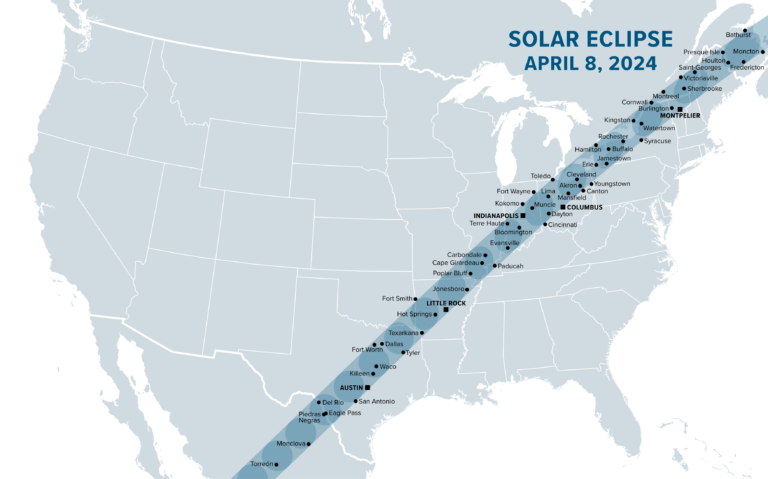On Monday, April 8, millions of Americans will experience a momentary darkening of the sky as the 2024 solar eclipse passes through. This event marks the first solar eclipse over North America in seven years, with the next one not visible from the contiguous U.S. until Aug. 23, 2044, according to NASA.
The exact timing of the solar eclipse will vary based on location and time zone, with visibility also subject to Monday’s weather conditions. Whether you’re observing from home or traveling to witness it firsthand, here’s what you can anticipate for the precise eclipse timing.
The total solar eclipse will cast its shadow along a “path of totality” spanning over 100 miles wide, stretching across the continent. Within this path, the moon will completely block the sun, resulting in a temporary darkening of the afternoon skies for a few minutes.
Outside the path of totality, the rest of the continental U.S. will experience a partial solar eclipse, with the moon appearing to take a nibble out of the sun. The extent of this partial eclipse varies depending on location.
The first location in North America to witness totality on Monday will be along Mexico’s Pacific coast, around 11:07 a.m. PT, as per NASA’s predictions. From there, the eclipse’s trajectory moves northeastward, passing through Texas, Oklahoma, Arkansas, Missouri, Illinois, Kentucky, Indiana, Ohio, Pennsylvania, New York, Vermont, New Hampshire, and Maine. Portions of Michigan and Tennessee may also catch a glimpse of totality if the skies are clear.






